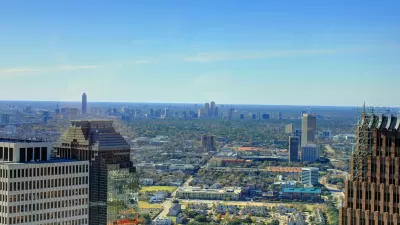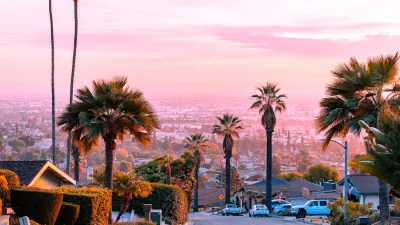The Economist takes notice of Houston's efforts to create a more sustainable and attractive city, a not uncomplicated task in the capital of America's energy industry.
Overhauled energy codes for buildings, an expanding light rail system, a new bike-sharing program, and LED bulbs in most traffic lights: does this sound like the description of America's infamously sprawling and regulation-averse fourth-largest city?
Adopting more sustainable practices makes sense for an increasing number of businesses and residents of Houston. "Laura Spanjian, the city's director of sustainability, says that
businesses are increasingly likely to get on board if they can see the
long-term savings or the competitive advantages that flow from creating a
more attractive city."
And the opinions of residents are changing as well. The annual Houston Area Survey from Rice's Kinder Institute, "found that 56% think a much better
public transport system is 'very important' for the city's future. A
similarly solid majority said the Metro system should use all its
revenue for improvements to public transport, rather than diverting
funds to mend potholes. In the 1990s, most respondents were more
concerned about the roads."
"People's views about houses have changed, too. In 2008 59% said they
would prefer a big house with a big garden, even if that meant they had
to use their car to go everywhere. Just 36% preferred a smaller house
within walking distance of shops and workplaces. By 2012, preferences
were running the other way: 51% liked the idea of a smaller house in a
more interesting district, and only 47% said they wanted the lavish
McMansion."
FULL STORY: Changing the plans

Trump Administration Could Effectively End Housing Voucher Program
Federal officials are eyeing major cuts to the Section 8 program that helps millions of low-income households pay rent.

Planetizen Federal Action Tracker
A weekly monitor of how Trump’s orders and actions are impacting planners and planning in America.

Ken Jennings Launches Transit Web Series
The Jeopardy champ wants you to ride public transit.

Opinion: Transit Agencies Must View Service Cuts as Last Resort
Reducing service could cripple transit systems by pushing more riders to consider car ownership, making future recovery even less certain.

‘Smart Surfaces’ Policy Guide Offers Advice for Building and Maintaining Urban Tree Canopies
Healthy, robust tree canopies can reduce the impacts of extreme heat and improve air quality.

New Jersey Lawsuit Targets Rent-Setting Algorithms
The state of New Jersey is taking legal action against landlords and companies that engage in what the state’s Attorney General alleges is illegal rent fixing.
Urban Design for Planners 1: Software Tools
This six-course series explores essential urban design concepts using open source software and equips planners with the tools they need to participate fully in the urban design process.
Planning for Universal Design
Learn the tools for implementing Universal Design in planning regulations.
Heyer Gruel & Associates PA
Ada County Highway District
Institute for Housing and Urban Development Studies (IHS)
City of Grandview
Harvard GSD Executive Education
Toledo-Lucas County Plan Commissions
Salt Lake City
NYU Wagner Graduate School of Public Service





























